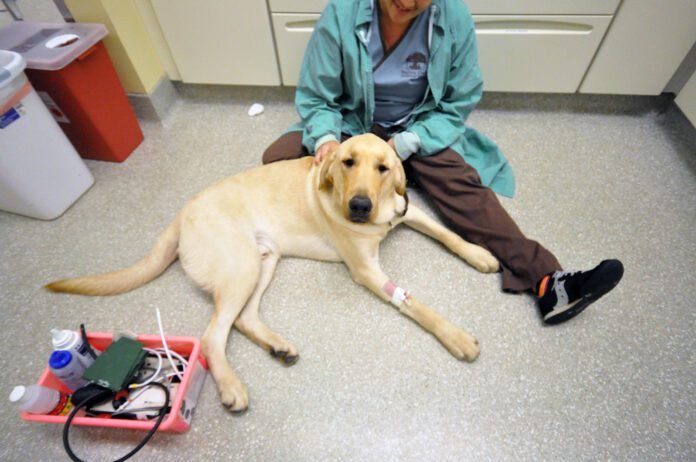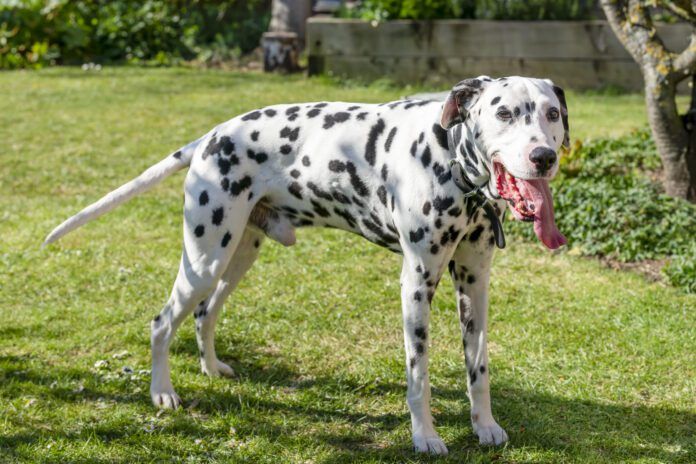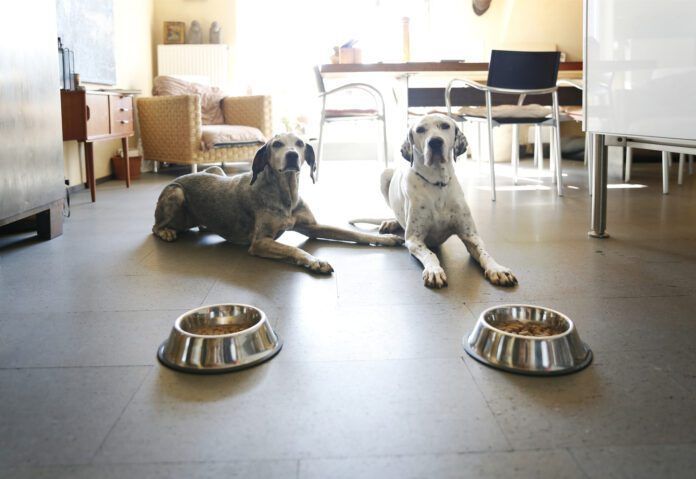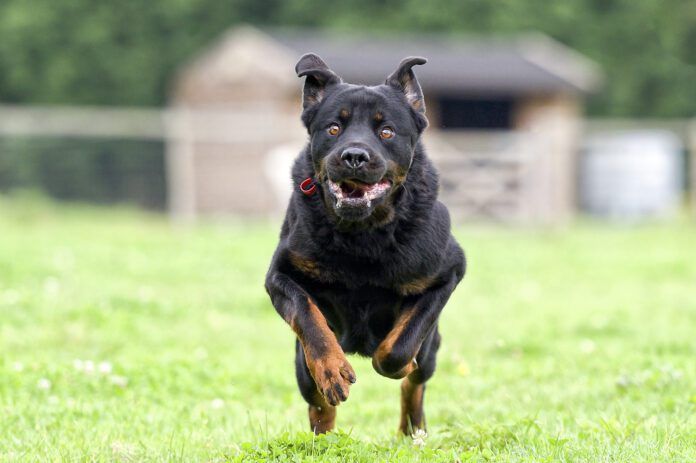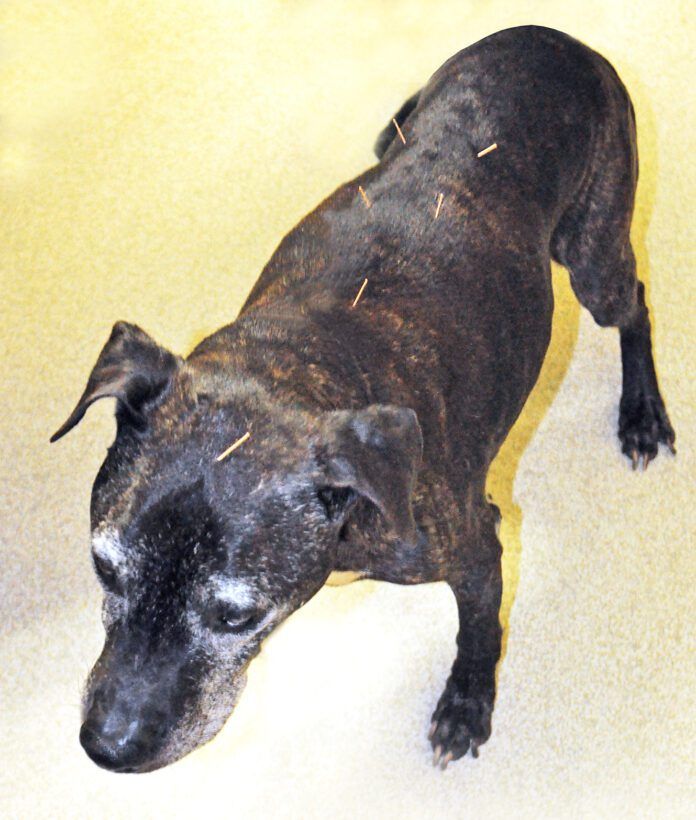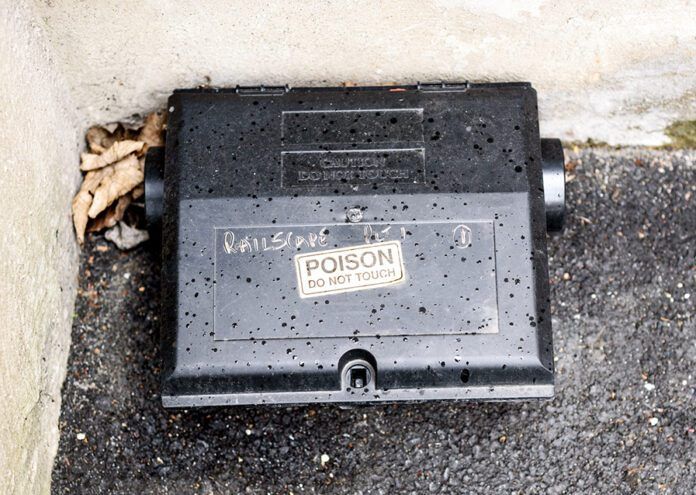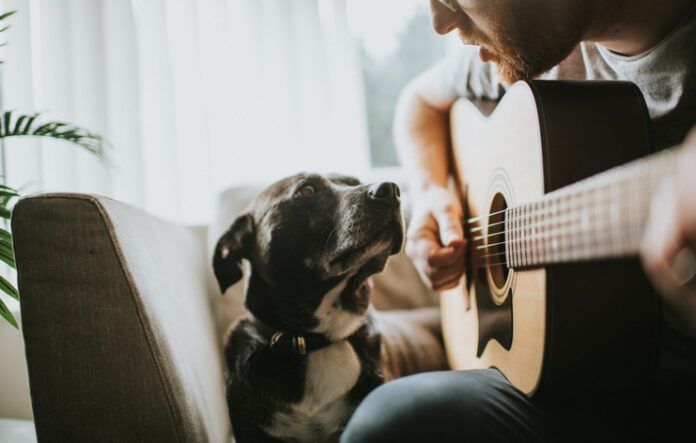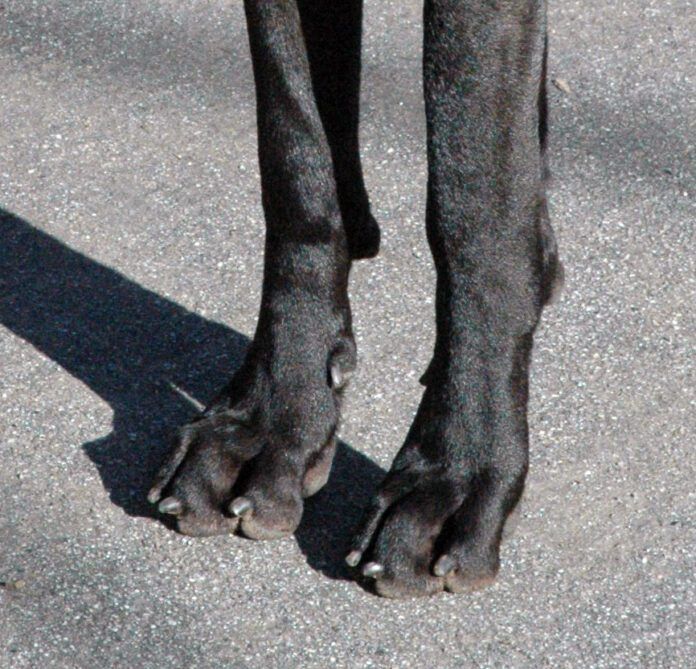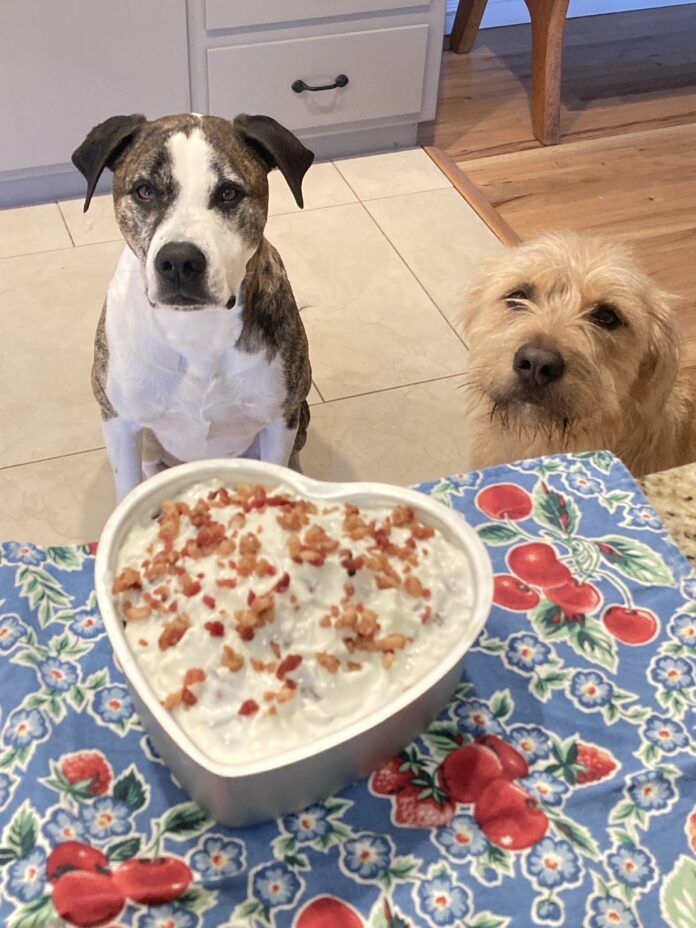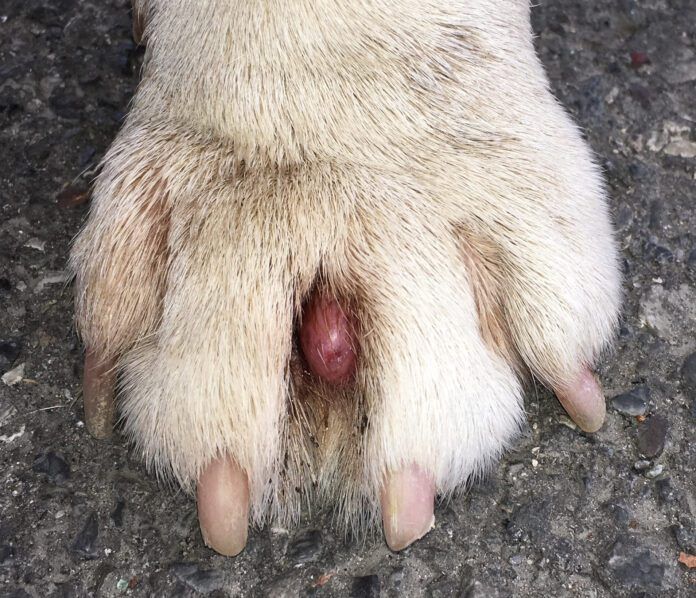Only only about 3% of the almost 77 million dogs living in the United States are covered by pet health insurance. That’s a lot of dog owners footing the entire veterinary bill themselves or, sadly, sometimes opting for what’s called “economic euthanasia,” which means the dog is ill but the owners cannot afford the cost of treatment. Don’t let that happen to you and your dog!
Since inflation drove up the cost of veterinary care an estimated 10% last year, you’d think that pet health insurance premiums might have increased as well. But, surprise! The North American Pet Health Insurance Association (NAPHIA) 2022 State of the Industry Report shows that the cost of dog health insurance decreased 3.3% in 2021 with an average cost of $583.91 per year ($48.58 per month). The fact is, pet insurance is not that expensive, and it does whittle down out-of-pocket veterinary expenses.
Why Purchase Pet Insurance? A Risk-Management Decisions
Both you and pet insurance companies make risk-management decisions when it comes to the cost of insurance and deciding what dog insurance covers for your dog and how much it will cost.
In setting its rates, the insurance company looks at the likelihood of your dog becoming ill or injured, which includes your dog’s breed, age, size, and (sometimes) activity, and where you live (consider that everything’s more expensive in New York City than it is in Mercedes, Texas).
Data shows why the breed of dog makes a difference. For example, 65% of Golden Retrievers die from cancer compared to a 25% rate in all dogs, according to a June 2022 study in PLOS. So, yes, insuring your Golden will cost more than a Jack Russell Terrier, one of the least expensive to insure, but it’s not an arbitrary thing. There are numbers behind the decisions.
Size matters, too. Larger dogs are more prone to orthopedic and tendon/ligament issues than smaller dogs, and often the costs of their medications are higher. Finally, aging brings on more illnesses and problems, just as it does in people, so insurance rates rise every year for your dog.
Those things will affect the prices that insurance companies will quote for covering your dog. But you need to look hard at what you get for your money, and compare this with offerings from other companies, in order to get the best protection for your dog for the money.
In some areas, you may be able to get financial help paying your dog’s veterinary bills (beyond begging friends and relatives for help).
The American Veterinary Medical Association lists places that will help with your veterinary bills, if you qualify. Visit https://www.avma.org/resources/pet-owners/yourvet/financial-assistance-veterinary-care-costs to learn more. They advise that you can also contact your state’s veterinary medical association to see what is offered in your area.
CareCredit offers a no-interest credit card to pay your veterinary bills within a short period of time. You need to apply for the card, and your veterinarian must be a participating provider. A quick look showed that far more veterinary clinics are accepting this option over discount cards. In addition, CareCredit offers a discount on your premium for Pets Best insurance, if that insurance fits you and your dog’s needs
Check Prospective Pet Insurance Policies For These Things
NAPHIA lists 38 pet insurance companies among its members; there are a lot of choices for insurance. In the chart below, we’ve listed what we feel are the top choices available, but it’s not an all-inclusive list. The best dog insurance is the one that suits your individual needs and covers your dog’s most common risks.
The first thing to do when you’re evaluating an insurance policy is to download a sample copy of the insurance policy and really read it. It’s the only way to know for sure what the insurance covers and doesn’t cover – the exclusions. If you cannot download a copy, email the company and request one. If they refuse to send one, move on.
Examine the policies you are considering so you understand how they deal with the following:
- Waiting periods. Every insurer has waiting periods before coverage starts – otherwise everyone would just wait until their dog is ill and then get insurance. It doesn’t work that way! Most waiting periods are two weeks on illness, sometimes less time for accidents. Orthopedic coverage may be around six months.These are all acceptable and understandable ranges and illnesses that occur during that waiting period may be considered pre-existing. Find out. The AKC insurance is the only insurer we found that will cover pre-existing conditions. They will not cover them for the first year of your policy but, if your dog has had no incident of the condition during that year, after those 365 days, they will cover new episodes.
- What’s “medically necessary.” Be sure the policy defines “medically necessary” services. Are these services the insurer considers necessary? If so, that policy may not be best for you. It should cover all services recommended by your veterinarian. “Medically necessary” is a term we think should be defined by the veterinary professional.
- Exclusions (what it won’t cover). When you read the policy, highlight things that concern you, such as no breeding coverage. Does that include accidental pregnancies or just professional breeders? If you’re not sure if you should be concerned about an exclusion or not, ask your veterinarian. Most veterinarians will do everything they can to help you with insurance because they know it benefits the dog; any vet will tell you that the saddest and most frustrating part of their profession is being told that a sick or hurt pet’s owner cannot afford the treatment.Exclusions for elective procedures like tail docking are understandable. But “bilateral exclusions” are far less understandable; they mean that if a dog requires knee surgery on the right leg and later injures his left, it won’t be covered!Also watch out for exclusions that are worded in a confusing manner, like: “If your pet has undiagnosed masses prior to the end of the waiting period, any mass or condition where a mass is a clinical sign is not covered, including cancer.” What? Email the company to clarify any wording you don’t understand and get the answer in writing. If they won’t do that, say “No, thank you.”
- Requirements for enrollment. The insurer may require complete medical records for your dog before they issue a policy. They also may require a veterinary exam have been done within the last 12 months. Some policies will deny claims if you do not, in their opinion, properly care for your dog, including annual visits and vaccinations.The policy may state things like if your veterinarian recommends a certain treatment and you refuse that treatment, that condition may be excluded in the future. For example, if you refuse to give your dog a particular vaccination and your dog contracts that disease, the insurance will not cover the treatment.Find out what you must do every year to stay insured. Are there specific vaccinations you must give? Do you have to have an annual well visit? These are not unreasonable, but you need to be aware of them and adhere to them or risk getting your claim denied.
- Senior dogs. If you want to have your dog insured into old age until the very end, no matter the cost, be sure that the company will do that when you sign up for the insurance. Nearly all companies have a limit as to how old the dog can be upon initial enrollment but will cover the already insured dog – at a high cost – until death. A few will only cover up until a specified age.
- Dental care. For many dogs, it’s not a case of if but when they will have dental problems (yes, brushing their teeth every day makes a positive difference, but so few of us do it). Check to be sure dental care is covered and avoid policies with limits on dentals. One policy had a $1,000 cap. I know of at least two people whose dogs had dental bills of over $2,500. Some policies require professional teeth cleaning to cover dental procedures due to poor teeth.
- Congenital/hereditary diseases. If these conditions are diagnosed prior to you getting a policy, it’s understandable that the insurance would consider them pre-existing. This is one of the many reasons to insure your puppy as soon as she comes home. However, some policies refuse to cover any inherited diseases, such as hip dysplasia.
- Prescriptions. Nearly every company covers prescriptions at 100% of actual cost. If the one you’re looking at doesn’t, consider another one. Always check for the prescription formulary list of drugs as well. These are the medicines the company will reimburse.You can’t predict what drugs your dog will or will not need, but if the list is really short – like one page – you might wonder why.
- Continued coverage. The policy should state that they continue to cover your dog even if he becomes chronically ill, as long as you pay the premiums. Be wary of provisions that state they can cancel if your dog contracts a chronic disease, like diabetes, or that they only pay for that disease for one year. Fortunately, these are outdated policies, but they may appear.
- Specialists. As in human medicine, veterinary medicine is becoming increasingly a specialist field. While decades ago, you saw one veterinarian for nearly everything your dog needed, now you may find yourself being referred to a cardiologist or orthopedist or ophthalmologist. Be sure there are no contract exclusions on seeing a specialist.
- Payment to you or the veterinarian? With most plans, you must pay the veterinarian at the time of your visit and then be reimbursed by the insurance. Note: Trupanion will pay the veterinarian directly, but your vet must be willing to accept that option.
Which veterinarians you can see. Every policy should say that you can see any licensed veterinarian in any state. There are programs masquerading as insurances that require you to use a veterinarian from within their corporation, which could become a problem if you decide you don’t like the clinic anymore.
How to Save Money on Pet Insurance Premiums
There are a number of ways that you can save money on the cost of your dog’s insurance – and a few things that we don’t recommend trying:
- Insure early. The age of your dog when he’s first enrolled matters – a lot. Insure your dog as soon as you get him. The least expensive rates start at puppy ages. Every year you wait, the initial premium will be higher – higher than if you started insuring with that company when the dog was a pup.Don’t listen to the naysayers who claim young dogs don’t have to be insured. Have you heard of a greenstick fracture? Also, anything your puppy or young adult dog is seen by a veterinarian for prior to his enrollment in an insurance plan will likely be excluded as a pre-existing condition. If you take him to the vet at the age of 1 year and learn that his itching is due to allergies, when you try to insure him at 18 months, you may find the insurance company will not cover the cost of allergy treatments for the rest of his life. Whoops!
- Choose a plan with deductibles and co-insurance amounts that work best for you. Fortunately, deductibles and co-insurance choices are pretty standard across the industry. When you sign up, you can fiddle with the choices to find a premium you like (it’s not a lot of difference, but it may add up over the course of your dog’s lifetime).There’s no right or wrong here, just keep in mind that you’ll pay a lot more out of pocket if your co-insurance is 70/30% and your dog needs surgery versus 90/10%. (A $5,000 surgery would cost you $1,500 out of pocket at the 70/30 and $500 of you chose the 90/10.)Embrace offers an interesting vanishing deductible option, which could save you money if your dog stays healthy long enough. It resets once there’s a claim.Trupanion offers a lifetime deductible, which means you pay the deductible for each new illness, not every year for the same illness. In other words, if your dog gets cancer and requires treatment for a year or two, you’re only paying the deductible for that particular illness once. This is a risk management decision, too. If your dog contracts four different illnesses in a year, you’re paying four deductibles that year.
- Don’t buy a plan with an annual limit. You can save money on your premium by choosing an annual limit on what the insurance will reimburse – the total amount the company will pay for your dog in one year. Many experts state there’s no problem choosing a figure, as most dogs do not reach those limits. That may be true, but what if a cancer diagnosis comes along and the surgery and therapy put you over your limit? And it’s only July. The rest of the treatments are all on you.We recommend that you choose only companies offering unlimited coverage. Save money with deductibles and co-insurances, and by declining add-on riders you don’t really need.
- Only buy the riders that you need. Preventive care is not what pet insurance was designed to do. Yes, human medicine covers some preventive care, like colon-cancer screenings, because it’s cheaper in the long run than treating the disease.But the preventive care offered by most pet insurance companies is not the same. It’s just paying in advance for routine things your dog may or may not need. And the reimbursement amounts are often small and limited: $15 for a rabies shot. $15 for a routine urinalysis (the last urinalysis I paid for was over $85, without the vet office fee).Another company offers $50 for flea/tick control for the year. Last time I looked, that costs $10 to $15 a month, so the company reimburses less than half of it. If you will use all the covered preventive care benefits, well, OK.
- Decide whether you want a plan that covers the cost of office visits. A few companies do not cover the fee for the veterinarian seeing your dog. That’s your cost and the average office fee is $50 to $75. It is a way for the insurance company to save a few dollars and pass along a lower premium, which may be helpful. There’s no right or wrong here. It’s the calculated risk thing. For me, an occasional veterinary visit is an expected part of owning a dog, just like food, so I accept that risk to get the lower premium.
- We don’t recommend low-cost “accident only” policies. This type of policy is better than nothing, but the odds are more likely that your dog will become ill than get hit by a car, if you’re a responsible owner. They are far less expensive than injury-and-illness plans; just know what you’re getting.
- We like plans that cover complementary and alternative medicine. Frankly, this should be included in your basic policy – at least the widely accepted therapies like acupuncture, laser treatment, and chiropractic. On the other hand, if you don’t believe in these modalities, then it’s a way to save some money because a few insurers still offer them as add-on riders.
- Look for “member” discounts. You can get discounts for multiple pets, being a veteran, a AAA member, and many other types of things.
- Avoid insurers that reimburse on a “usual and customary” fee scale. You want insurance that considers the actual cost of the veterinary bill you receive when calculating their payment. Not that long ago, many companies listed a maximum amount that they would pay for any particular procedure. Only a few use that now, but if you see one, we suggest you keep looking.
- Don’t buy policies with a per-incident deductible. With a per-incident deductible, you pay the first $250 (if that’s your chosen deductible amount) of every veterinary interaction. Most policies now offer an annual deductible, so you pay the first $250 bill for the year.
Making a Decision on the Best Dog Health Insurance
There’s no right or wrong here, and chances are good that you can adjust your policy when you renew it if you think that maybe you should have included the preventive/wellness rider or used a higher deductible. Whatever you decide, be sure your policy covers accidents, illness, and prescriptions. For us, that’s the minimum. Riders like preventive care are gravy. Most people still opt for the $250 deductible, 80/20 insurance plan. It’s the middle range of that “premium versus out-of-pocket expenses” decision.
Insure your dog as soon as possible, and be sure you adhere to your obligations in that contract, such as core vaccines and annual visits. And, finally, once your dog is insured, file your claims quickly. Some policies have very lenient time limits for filing, but the wisest course of action is to get it done immediately. If questions or concerns arise, everyone involved will have the case fresh in their minds.
WDJ’s Top Pet Health Insurance Companies
From the 38 companies that belong to the North American Pet Health Insurance Association (NAPHIA), we’ve selected 17 that meet our basic criteria for a useful insurer: They all cover accidents, illness, and prescriptions and don’t use tricky language to obfuscate any weaknesses. This chart compares the most important variables in pet insurance policies, to help you reject companies that don’t offer what you need, so you can focus on the companies that offer what you want.
| Insurance/ Website | Wellness Rider | Exam Covered | Complementary Treatment | Annual Limits | Waiting Periods |
|---|---|---|---|---|---|
| 24Petwatch 24petwatch.com | Yes | Yes | Yes | $2,500 to $7,000 | 14 days |
| AKC akcpetinsurance.com | Yes | Rider | Yes | $2,500 to unlimited | 2 days accident, 14 days illnesses, 180 days cruciate ligament, 180 days IVDD |
| ASPCA aspcapetinsurance.com | Yes | Yes | As defined by American Association of Rehabilitation Veterinarians | $5,000 to unlimited | 14 days |
| Embrace embracepetinsurance.com | No | Yes | Yes | $5,000 to unlimited | 2 days for accidents, 14 days; up to six months for orthopedic |
| Fetch fetchpet.com | No | Yes | Yes | Unlimited | 15 days; up to six months for knees/hips injuries |
| Figo figopetinsurance.com | Yes | Rider | Yes | $5,000 to unlimited | 1 day accidents, 14 days for illnesses, and 6 months for orthopedic |
| Hartville Pet Insurance hartvillepetinsurance.com | Rider | Yes | Yes | $5,000 to unlimited | 14 days |
| Healthy Paws healthypawspetinsurance.com | No | No | Yes | Unlimited | 15 days |
| Lemonade lemonade.com/pet | Yes | Rider | Rider | Unlimited | 2 days for accidents, 14 days for illnesses, and 6 months for cruciate ligament |
| ManyPets manypets.com | Yes | Yes | Yes | Unlimited | 15 days |
| MetLife metlifepetinsurance.com | Yes | Yes | Yes | $2,000 to $10,000 | Zero days accident, 14 days illness |
| Nationwide petinsurance.com | Rider | Yes | Varies with plan | Varies to unlimited | 14 days |
| Pets Best petsbest.com | Yes | Varies with plan | Rider | $2,500 to unlimited | 3 days for accidents, 14 days for illnesses, and 6 months for cruciate ligament |
| Pumpkin pumpkin.care | No | Yes | Rider | $10,000 to unlimited | 14 days |
| Spot spotpetins.com | Yes | Yes | Yes | Unlimited | 14 days |
| Trupanion trupanion.com | No | No | Rider | Unlimited | 5 days accidents, 30 days illness |
| Wagmo wagmo.io | Yes | Yes | Yes | $10,000 per incident limit; $100,000 lifetime limit | 15 days, 30 days cancer, 6 months for cruciate ligament |


